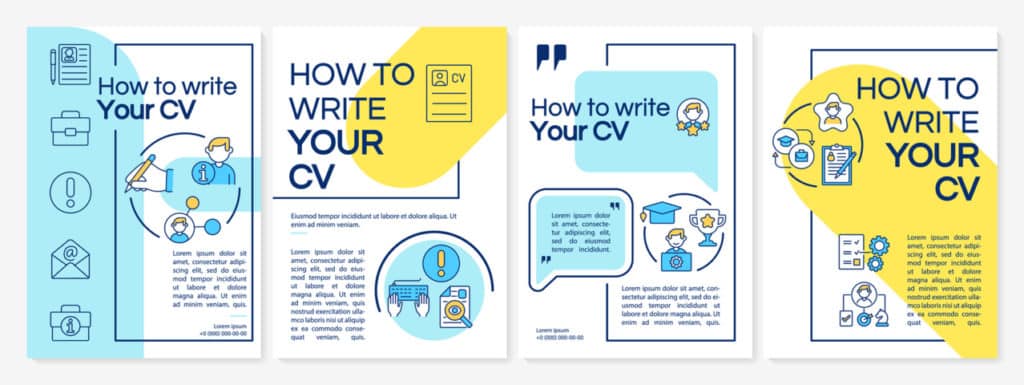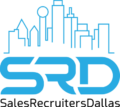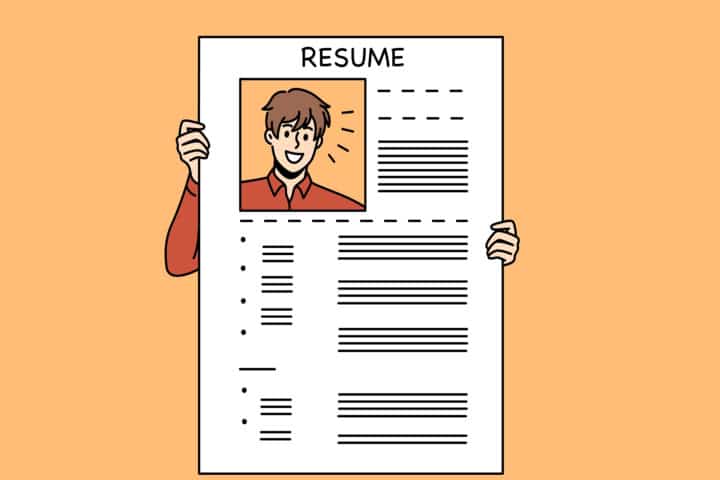In the world of work, things are constantly changing. How we write a resume has changed dramatically over the years, and it is likely to change even more in the future. With more than 77% of resumes falling short of the ideal length and guidelines preferred by recruiters, it’s more important than ever to ensure that your resume is up to date and compliant with the latest standards.
If you are looking for a job in 2023, you’ll need to know how to create a resume that stands out from the competition. In this step-by-step guide, we will show you how to write a resume that will make potential employers take notice!

What Is A Resume?
A resume is a document that outlines your qualifications, skills, and experience. It is typically used when applying for jobs, internships, and graduate/professional programs. The purpose of a resume is to give the reader an overview of your professional history in order to demonstrate that you are qualified for the position you are applying for. Without one, employers would have to rely on your word of mouth or online presence to get an idea of your qualifications.
What Are The Different Types Of Resumes?
There are three main types of resumes: chronological, functional, and hybrid.
- Chronological resumes list your work experience in reverse chronological order, with your most recent position at the top. This type of resume is the most commonly used and is a good choice if you have a steady work history with no significant gaps.
- Functional resumes highlight your skills and qualifications rather than your work experience. This type of resume is a good choice if you have gaps in your employment history or are changing careers.
- Hybrid resumes are a combination of chronological and functional resume types. This type of resume is a good choice if you have a strong work history that supports your qualifications for the position you are applying for.
The right type of resume for you will depend on your work history, skills, and qualifications. If you are unsure of which type to use, there are many online resources that can help you decide.

What Do Employers Look For In A Resume?
Did you know that 24% of hiring managers spend fewer than 30 seconds looking at resumes in general? This means that it’s more important than ever to make sure your resume is clear and concise, as well as caters to what employers are looking for from a resume. The most important things that employers are looking for in a resume include:
Easy to read and follow
Employers want to be able to quickly scan your resume and get an overview of your qualifications. Use clear fonts, headings, and bullet points to make your resume easy to read. If you have tried to overload your resume with too much information, it will likely be disregarded. Instead, keep it simple and to the point.
Relevant qualifications
Make sure that the qualifications you list on your resume are relevant to the position you are applying for. If an employer is looking for someone with a degree in marketing and you have listed your degree in English, it is likely that your resume will not make it to the next round. Instead, focus on highlighting the qualifications that are most relevant to the position.
Keywords
Employers often use Applicant Tracking Systems (ATS) to screen resumes. To ensure that your resume is seen by a human, be sure to include keywords from the job listing in your resume. For example, if the job listing mentions “customer service,” be sure to include that phrase in your resume. By simply highlighting the most relevant qualifications and using keywords, you can increase your chances of getting your resume seen by an employer.
Accurate contact information
Be sure to include your name, email address, and phone number so that employers can easily get in touch with you. Having inaccurate or missing contact information is one of the most common resume mistakes. If an employer can’t get in touch with you, they are likely to move on to the next candidate.
No mistakes
It is important to proofread your resume multiple times before submitting it. A single typo or grammatical error could be enough for an employer to discard your resume. Have someone else read over your resume as well to catch any mistakes you may have missed.
While these are the most important things that employers are looking for, there are other elements that can make your resume stand out from the competition. For example, including links to your professional website or blog, as well as relevant coursework or certifications, can give employers a more well-rounded picture of your qualifications.

How To Write A Resume
Now that we’ve gone over what employers are looking for, let’s get into how to write a resume step-by-step in 2023. By following these simple tips, you can create a resume that will help you get the job you want.
Choose The Right Resume Format
As we mentioned earlier, there are three main types of resumes: chronological, functional, and hybrid. As you decide which format is right for you, keep in mind your work history, skills, and qualifications.
If you have a steady work history with no gaps, the chronological format is likely the best choice for you. This type of resume lists your work experience in reverse-chronological order, starting with your most recent position.
The functional format is best for those who have gaps in their work history or are changing careers. This type of resume focuses on your skills and qualifications rather than your work history.
The hybrid format is a combination of chronological and functional formats. This type of resume starts with a summary of your qualifications, followed by a chronological list of your work experience.
Thankfully, there are tons of online resume builders that can help you create a professional resume with ease. Simply enter your information into the builder and choose from a selection of templates. This is a great starting point or reference if you’re unsure about how to format your resume.
Decide On The Length
Resumes over 600 words are good for certain professions. But in business, long resumes make job seekers 72% less hireable. So, how long should a resume be in order to get you hired?
The answer is: it depends. For most job seekers, a one or two-page resume is all that’s needed. If you have over 15 years of experience or are applying for an executive-level position, you may need a longer resume. However, even in these cases, it’s important to focus on quality over quantity. Be sure to include only the most relevant information and leave out anything that doesn’t add value.
If you find yourself with a longer resume, try removing any outdated or irrelevant information. You can also use bullet points to make your resume more concise.
Choose The Sections You Plan To Include
Once you have decided on a format, it’s time to start adding content to your resume. The sections you include in your resume will depend on your work history and qualifications. However, there are some common sections that most resumes include:
- Contact Information: Include your name, email address, and phone number so employers can easily get in touch with you.
- Summary: A brief overview of your qualifications and experience.
- Work History: A list of your previous positions, including the dates you worked, your job title, and a description of your duties.
- Skills: A list of your skills and qualifications.
- Education: Your educational background, including the degrees or certifications you
- Non-work-related experiences: Any relevant experiences that don’t fall under your work history, such as volunteering, internships, or extracurricular activities.
Begin With Contact Information
The top of your resume should always include your contact information so that it’s easy for employers to reach out for an interview. This should include your name, email address, and phone number. You may also want to include links to your professional website or blog.
If you have a professional headshot, you can also include that at the top of your resume. However, this is not required and is generally only done if you are applying for a position in a creative field.
Next, add a brief summary of your qualifications. This should be one or two sentences long and give employers a snapshot of your experience and skills. For example:
“A motivated professional with six years of experience in the fashion industry. Proven ability to increase sales and grow customer base. Excellent communication and organizational skills.”
If you’re changing careers or have gaps in your work history, you may want to use a functional or hybrid resume format. These types of resumes focus on your skills and qualifications rather than your work history.
Include Your Previous Work Experience
The next section of your resume should be your work history. Start with your current or most recent position and work backward. For each position, include the dates you worked, your job title, and a brief description of your duties.
If you have less than five years of experience, you can combine this section with your education section. Simply list your degree and the school you attended underneath your job title.
If you have more than 15 years of experience, you can leave out your early positions as you don’t want to include too many jobs. Instead, focus on your most recent roles and highlight any promotions or accomplishments. You can also include a “Professional Experience” section that includes a more detailed overview of your career.
It’s important to list your accomplishments within each position. For example, if you increased sales by 20 percent, be sure to include that information. Numbers and data are always impressive to employers. If you’re just starting out or don’t have a lot of experience, you can still include information about your previous jobs. Just focus on the skills and qualifications that are relevant to the position you’re applying for.
Include Your Education
The next section of your resume should be your education. Start with your most recent degree or certification and work backward. Include the name of the school you attended, as well as the dates you graduated.
If you have a degree from a prestigious university or a relevant certification, you can include that information here. For example:
“B.A. in English from Harvard University”
If you’re a recent graduate or don’t have a lot of work experience, you can include more information about your education. This might include your GPA, relevant coursework, and extracurricular activities.
If you have more than five years of experience, you can leave out your high school education. However, if you have a GED or have taken some college courses, you can still include that information.
Tailor Your Resume To The Specific Job Posting
When you’re applying for a job, it’s important to tailor your resume to the specific position. This means including the keywords and skills that are listed in the job posting. While you want to include as many relevant keywords as possible, be sure not to stuff your resume with too many. This will only make it more difficult for employers to read.
If you’re applying for a job that’s in a different field than your current career, you may want to create a separate resume that focuses on your transferable skills. For example, if you’re a web developer who’s looking to become a graphic designer, you would focus on your design skills rather than your coding skills.
It’s also important to customize each resume you send out. Don’t just send the same one to every employer. Be sure to read the job posting carefully and tailor your resume accordingly.
Wrapping It Up
Writing a resume can seem daunting, but if you follow these tips, you’ll be on your way to landing the job of your dreams. Just remember to keep it clear, concise, and tailored to the specific position you’re applying for.
Are you looking for a job in the sales industry in Dallas, Texas? Our team will help you find the perfect opportunity for your skills and experience. If you need to fill sales roles in your company, Sales Recruiters Dallas can also help you find the right candidate for you. To start today, learn more about us or reach out to one of our team members today.

